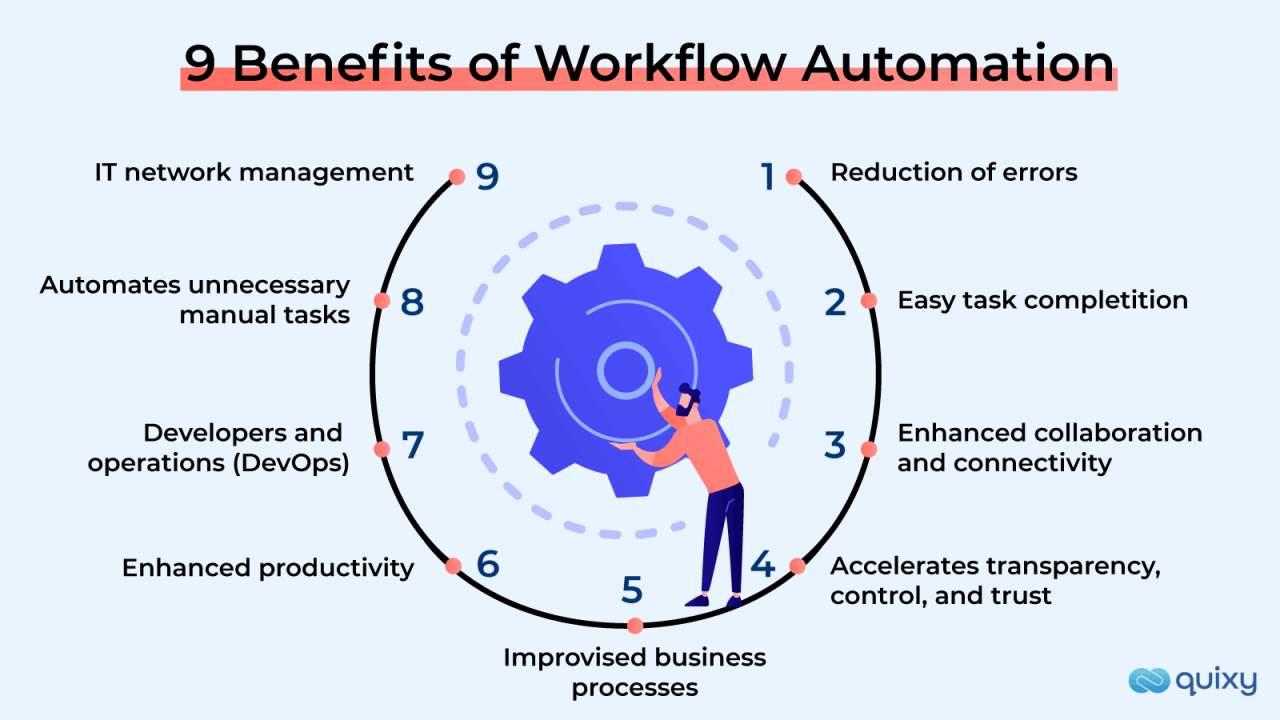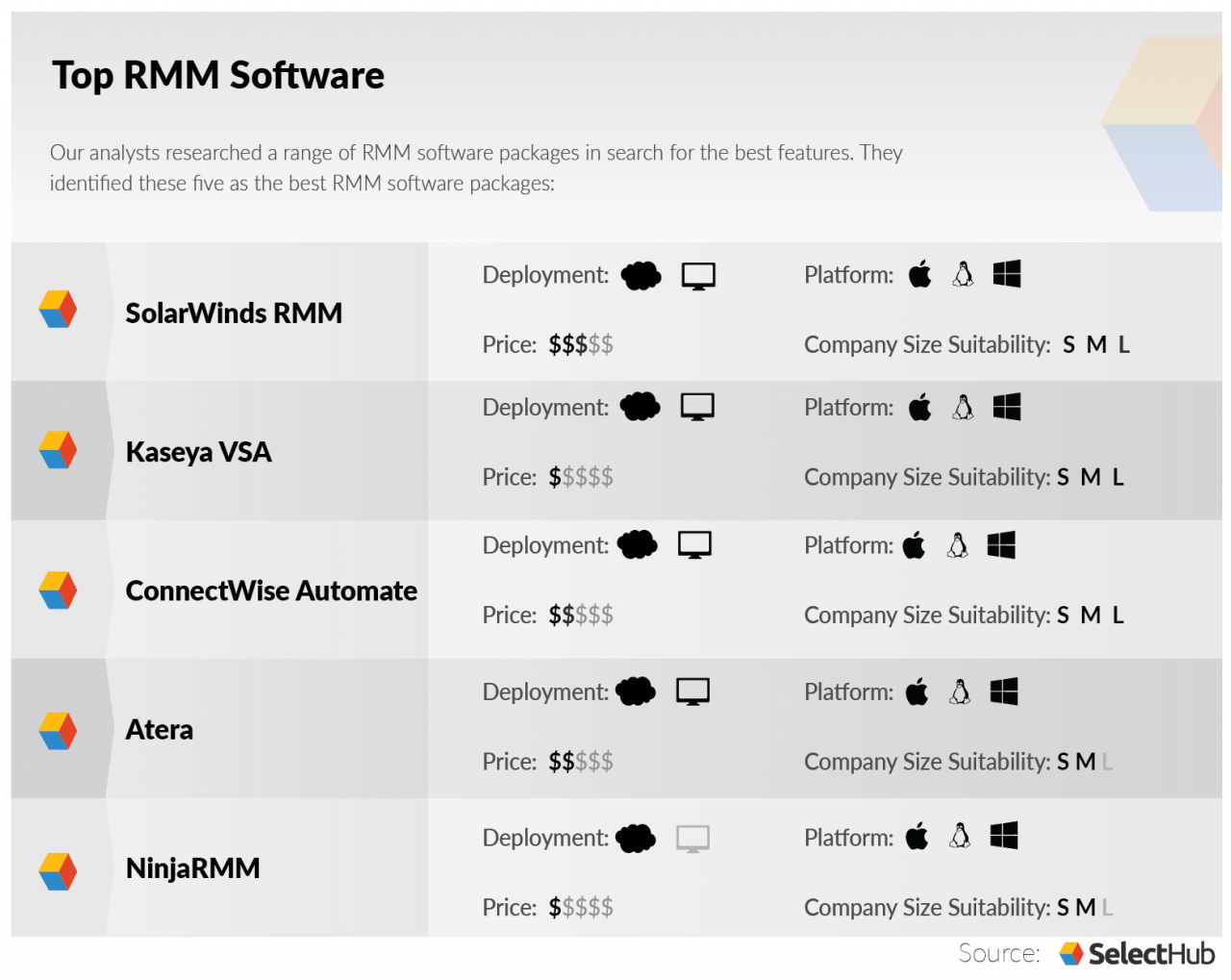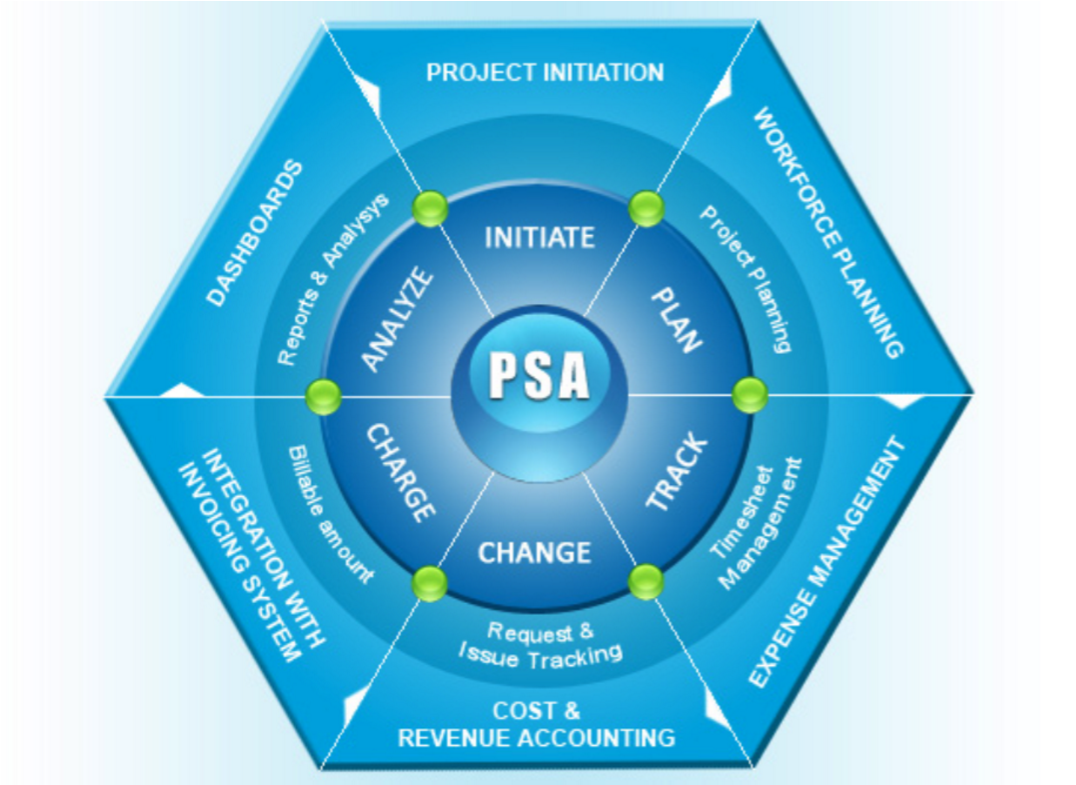RMM software with integrated PSA for streamlined workflows? It’s the ultimate productivity booster for IT businesses! Imagine a world where your ticketing system, client communication, and even financial reporting all seamlessly integrate. This isn’t science fiction; it’s the reality offered by the powerful combination of Remote Monitoring and Management (RMM) and Professional Services Automation (PSA) software. This synergy drastically cuts down on manual work, boosts efficiency, and ultimately, improves your bottom line.
Let’s dive into how this game-changing integration can revolutionize your operations.
By combining the real-time monitoring capabilities of RMM with the project management and billing features of PSA, businesses gain unparalleled control and visibility. Technicians can efficiently manage tickets, track their time accurately, and collaborate seamlessly. Clients enjoy improved communication and transparency, leading to increased satisfaction and loyalty. Ultimately, this integration translates into significant cost savings, increased revenue, and a happier, more productive team.
Defining RMM and PSA Integration

Running a successful IT business requires juggling a lot of balls – from monitoring client systems to tracking project hours and invoicing. This is where the power of integrated Remote Monitoring and Management (RMM) and Professional Services Automation (PSA) software comes in, streamlining operations and boosting efficiency. Let’s break down what these systems do individually and the magic that happens when they work together.
RMM and PSA integration represents a significant leap forward in IT business management, merging two previously disparate systems into a unified, efficient workflow. This synergy eliminates data silos, reduces manual tasks, and ultimately boosts profitability.
Remote Monitoring and Management (RMM) Software Core Functionalities
RMM software provides the backbone for proactive IT management. It allows technicians to remotely monitor and manage endpoints, ensuring systems are running smoothly and identifying potential problems before they impact clients. Core functionalities include automated patching, software deployment, remote control, and comprehensive system monitoring, alerting technicians to issues like disk space shortages or security vulnerabilities. This proactive approach minimizes downtime and enhances overall system stability.
Professional Services Automation (PSA) Software Key Features
PSA software focuses on the business side of IT services, automating and streamlining administrative tasks. Key features include project management tools for tracking time, managing projects, and assigning tasks; invoicing and billing systems to automate payments; and reporting and analytics for tracking key performance indicators (KPIs) and identifying areas for improvement. Essentially, PSA software transforms the often-chaotic process of managing projects and finances into a well-organized, efficient system.
Benefits of Integrating RMM and PSA Systems
Integrating RMM and PSA systems creates a powerful synergy that significantly improves efficiency and profitability. The seamless flow of information between the two eliminates the need for manual data entry, reducing errors and saving valuable time. For example, time spent on a client’s system automatically updates the PSA system, improving billing accuracy and reducing disputes. This integration also facilitates better resource allocation, enabling more effective project management and improved client communication.
RMM software with integrated PSA streamlines workflows, boosting efficiency across your tech team. However, maximizing the impact requires a well-trained team, which is why investing in effective CRM training programs for sales and customer service teams is crucial. This ensures seamless data flow and optimal use of your RMM/PSA system, leading to even greater productivity gains.
The combined data provides valuable insights into business performance, empowering data-driven decision-making.
RMM software with integrated PSA offers a powerful solution for streamlining workflows, boosting efficiency, and maximizing profitability. However, successful implementation hinges on overcoming common hurdles, as highlighted in this insightful article on top challenges in CRM adoption and strategies for overcoming them , which are surprisingly relevant to IT service businesses. By addressing these challenges, businesses can fully leverage the potential of integrated RMM and PSA systems for improved client management and operational excellence.
Examples of Streamlined Workflows Enabled by Integration
Imagine a scenario where a client reports slow performance. With integrated RMM and PSA, the technician can remotely diagnose the issue, resolve it through RMM’s remote control capabilities, and automatically update the PSA system with the time spent on the task. The invoice is then generated automatically, reflecting the precise time spent and services rendered. This entire process, from problem identification to invoicing, is streamlined and automated, eliminating manual data entry and potential errors.
Another example: proactive monitoring through RMM detects a security vulnerability on a client’s system. The PSA system can then automatically schedule a patch deployment, updating the project timeline and keeping the client informed of the proactive measures taken.
Comparison of Standalone vs. Integrated Solutions
| Feature | Standalone RMM | Standalone PSA | Integrated Solution |
|---|---|---|---|
| System Monitoring | Comprehensive | Limited or None | Comprehensive, with direct links to PSA tasks |
| Remote Control | Full functionality | None | Full functionality, integrated with PSA time tracking |
| Time Tracking | Basic or None | Comprehensive | Automated, linked to RMM activities |
| Invoicing | None | Comprehensive | Automated, based on RMM and PSA data |
| Reporting & Analytics | Limited to RMM data | Limited to PSA data | Comprehensive, combining RMM and PSA data for holistic view |
Impact on Technician Efficiency: RMM Software With Integrated PSA For Streamlined Workflows
Integrating RMM and PSA software isn’t just about connecting two systems; it’s a game-changer for technician productivity and overall team efficiency. By streamlining workflows and automating repetitive tasks, integrated solutions significantly reduce the time spent on administrative duties, allowing technicians to focus on what they do best: resolving customer issues. This ultimately leads to happier customers and a more profitable business.The synergy between RMM and PSA drastically improves ticket management and resolution times.
Instead of juggling multiple applications and manually updating information across platforms, technicians have a unified view of all their tasks, client information, and device statuses. This centralized approach minimizes context switching, reducing errors and accelerating the troubleshooting process.
Improved Ticket Management and Resolution Times
With integrated RMM and PSA, technicians gain access to a comprehensive view of each ticket. They can see the entire history of the issue, including previous attempts at resolution, associated devices, and relevant client information, all within a single interface. This eliminates the need to search across multiple systems, saving valuable time and improving the accuracy of diagnoses and repairs.
Imagine a scenario where a technician receives a ticket about a slow computer. With an integrated system, they can instantly access the device’s performance metrics from the RMM component, identify bottlenecks, and apply the necessary fixes directly, all while updating the ticket status in real-time. This seamless workflow drastically reduces the time spent on each ticket, leading to faster resolution times and increased customer satisfaction.
Reduced Technician Workload and Stress Levels
The automation features built into integrated RMM/PSA solutions significantly reduce the manual tasks that often burden technicians. Automated alerts for critical system events, automated patching, and automated scripting can handle many routine tasks, freeing up technicians to concentrate on more complex issues. This reduction in mundane tasks directly translates to lower stress levels and increased job satisfaction among technicians.
For example, automated patching prevents security vulnerabilities before they become critical issues, eliminating the need for technicians to manually update each device. This prevents many reactive tickets and significantly reduces the workload.
Automation Features Reducing Manual Tasks, RMM software with integrated PSA for streamlined workflows
Consider the following examples of automation features commonly found in integrated RMM/PSA software:
- Automated Patch Management: Software automatically identifies and installs necessary updates on client devices, reducing the risk of security vulnerabilities and freeing up technician time.
- Automated Alerting: The system automatically notifies technicians of critical system events, such as hardware failures or security breaches, allowing for proactive intervention.
- Automated Scripting: Pre-written scripts automate common tasks, such as user account creation or software installations, further reducing manual effort.
- Automated Ticket Routing: Tickets are automatically assigned to the most appropriate technician based on skillset and availability.
These automation features contribute to a significant reduction in manual tasks, directly impacting technician workload and stress levels positively.
Workflow Diagram Illustrating Process Improvement
[Imagine a diagram here showing a before-and-after scenario. Before integration, the diagram would illustrate a complex, multi-step process involving separate RMM and PSA systems, with multiple handoffs and potential for information loss. After integration, the diagram would show a streamlined, single-pane-of-glass workflow with automated steps and reduced handoffs. The diagram would clearly depict how the integration eliminates redundancy and accelerates the overall ticket resolution process.]
Potential Workflow Bottlenecks Addressed by Integration
Common bottlenecks in traditional workflows often include:
- Manual Data Entry: Duplication of effort in entering information into multiple systems.
- Lack of Visibility: Inability to track the status of tickets and devices across different systems.
- Inefficient Communication: Difficulties in coordinating between technicians and clients due to fragmented information.
- Slow Response Times: Delays in identifying and resolving issues due to inefficient workflows.
Integration of RMM and PSA directly addresses these bottlenecks by providing a unified platform for managing all aspects of IT support, from ticket creation to resolution.
Improved Client Communication & Reporting

Integrated RMM and PSA systems revolutionize client communication and reporting, transforming reactive support into proactive service. This seamless integration fosters transparency and builds stronger client relationships by providing real-time insights into IT health and service delivery. Automated reporting eliminates manual tasks, freeing up valuable time for technicians to focus on more complex issues.The enhanced communication and reporting capabilities offered by integrated RMM and PSA solutions significantly improve client satisfaction.
Clients appreciate the proactive approach, receiving timely updates and clear, concise reports on their IT infrastructure’s performance and security. This proactive approach minimizes disruptions and builds trust, leading to increased client retention and positive word-of-mouth referrals.
Customizable Reports
Integrated systems empower businesses to generate a wide array of customizable reports tailored to specific client needs. For example, a monthly report might detail uptime, ticket resolution times, and security alerts. Alternatively, a quarterly report could focus on budget allocation and cost savings achieved through proactive maintenance. These reports can be easily exported in various formats (PDF, CSV, etc.) for convenient sharing and archiving.
Another example could be a customized report showcasing the number of security vulnerabilities mitigated, demonstrating the value of the managed services provided.
Key Metrics Tracking and Reporting
Tracking key performance indicators (KPIs) is crucial for demonstrating the value of managed services and improving operational efficiency. An integrated RMM and PSA system allows for the effortless tracking and reporting of various metrics, providing valuable insights into service performance and client satisfaction.
- Ticket Resolution Time: Measures the average time taken to resolve client tickets, indicating efficiency and responsiveness.
- First Contact Resolution Rate: Shows the percentage of tickets resolved on the first contact, highlighting the effectiveness of support staff.
- Client Satisfaction Score (CSAT): Tracks client feedback on service quality, providing a direct measure of client happiness.
- Uptime Percentage: Monitors the percentage of time systems are operational, reflecting the reliability of the IT infrastructure.
- Mean Time To Resolution (MTTR): Measures the average time it takes to resolve an incident, helping to identify and address recurring issues.
These metrics, presented in clear and concise reports, allow for data-driven decision-making, enabling proactive improvements to service delivery. For example, consistently high ticket resolution times might indicate a need for additional training or resources.
Proactive Alerts and Notifications
Proactive alerts and notifications are a game-changer in client service. Instead of reacting to problems, integrated systems can anticipate and address potential issues before they impact clients. For example, an alert might notify the technician of a failing hard drive, allowing for a proactive replacement before data loss occurs. This proactive approach prevents costly downtime and strengthens client relationships.
Automated email notifications or SMS alerts regarding impending maintenance windows or critical security updates ensure clients are informed and prepared, minimizing disruptions to their operations. Real-time dashboards visualizing key metrics and alerts can further enhance transparency and proactive issue management.
Financial Benefits and ROI

Integrating RMM and PSA software isn’t just about streamlining workflows; it’s a strategic investment that directly impacts your bottom line. By automating tasks and improving efficiency, you can significantly reduce operational costs and boost profitability. This section explores the financial advantages and demonstrates the strong return on investment (ROI) associated with this integrated approach.
The cost savings generated by RMM/PSA integration stem from the automation of numerous manual processes. Time previously spent on administrative tasks like invoicing, ticket management, and reporting is freed up, allowing technicians to focus on higher-value activities that directly contribute to revenue generation. This increased efficiency translates to a greater number of billable hours and improved client satisfaction, further driving profitability.
Cost Savings from Reduced Manual Processes
Automating repetitive tasks such as invoice generation, time tracking, and report creation leads to substantial cost savings. Manual processes are prone to errors, requiring additional time for correction and potentially leading to financial losses. RMM/PSA integration eliminates these errors, minimizing the need for rework and associated labor costs. For instance, automated invoicing ensures timely payments and reduces the risk of late payments or disputes.
Similarly, automated time tracking eliminates the need for manual timesheet entry, reducing administrative overhead and improving accuracy.
Increased Efficiency and Higher Profitability
The enhanced efficiency resulting from RMM/PSA integration directly contributes to higher profitability. Technicians spend less time on administrative tasks and more time on resolving client issues, leading to increased billable hours and improved customer satisfaction. This, in turn, translates to increased revenue and improved margins. Furthermore, better resource allocation, facilitated by the integrated system’s ability to track technician availability and skill sets, optimizes workforce utilization, maximizing the return on investment in personnel.
Improved Resource Allocation and ROI
Effective resource allocation is crucial for maximizing ROI. RMM/PSA integration provides real-time visibility into technician workloads, skill sets, and client needs. This allows managers to assign tasks optimally, ensuring that the right technician is working on the right job at the right time. This eliminates bottlenecks, reduces downtime, and ensures that resources are used efficiently. For example, a technician with expertise in server maintenance can be immediately assigned to a critical server issue, minimizing downtime and potential financial losses for the client.
This proactive approach not only improves client satisfaction but also enhances the overall efficiency and profitability of the business.
Potential Cost Savings and Revenue Increases
The following table illustrates potential cost savings and revenue increases associated with RMM/PSA integration. These figures are illustrative and will vary depending on the specific business and its operational context.
| Area | Cost Savings | Revenue Increase | Total Impact |
|---|---|---|---|
| Reduced administrative overhead | $5,000 per year | $0 | +$5,000 |
| Improved technician efficiency | $0 | $10,000 per year | +$10,000 |
| Reduced errors and rework | $2,000 per year | $0 | +$2,000 |
| Improved client retention | $0 | $3,000 per year | +$3,000 |
| Total | $7,000 | $13,000 | +$20,000 |
Hypothetical Case Study: ABC Tech Solutions
ABC Tech Solutions, a mid-sized managed service provider (MSP), implemented an integrated RMM/PSA solution. Prior to integration, they experienced significant challenges with manual processes, leading to inaccurate billing, missed deadlines, and low technician utilization. After implementation, they saw a 20% reduction in administrative overhead, a 15% increase in billable hours, and a 10% improvement in client satisfaction. These improvements translated into a $15,000 annual cost savings and a $25,000 increase in annual revenue, resulting in a significant boost to their bottom line and a rapid ROI.
This demonstrates the tangible financial benefits of adopting an integrated RMM/PSA approach.